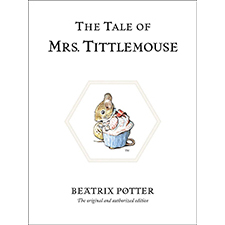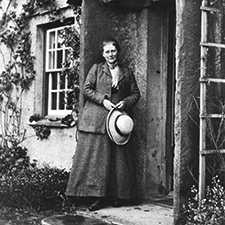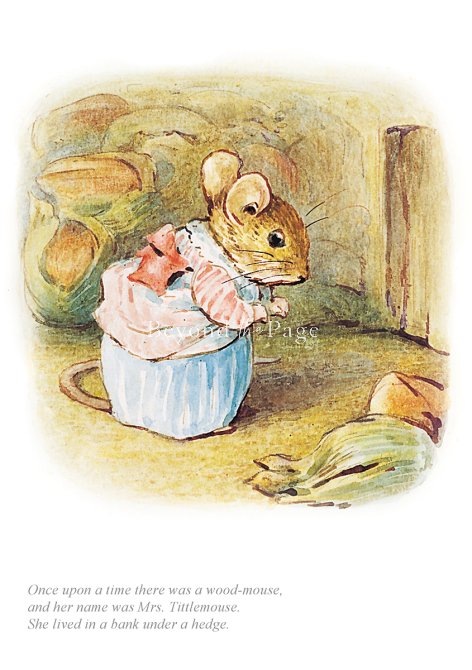We use cookies to make your experience better. To comply with the new e-Privacy directive, we need to ask for your consent to set the cookies. Learn more.
Beatrix Potter
Mrs Tittlemouse
Official Collector's Edition Print. Hand numbered (unsigned) on fine art paper
| Image Size: | 17 x 22.5cm |
| Mounted Size: | 35 x 41cm |
| Overall Size: | 35 x 41cm |
| Edition Size: | 495 |
Presented in a conservation mount with a Certificate of Authenticity. From Beatrix Potter’s original illustrations for ‘The Tale of Mrs. Tittlemouse’

About the Artwork
THE TALE OF MRS. TITTLEMOUSE published 1910
Beatrix Potter’s interest in all kinds of creatures, from spiders to bees, is clearly evident in ‘The Tale of Mrs. Tittlemouse’. There are no people in the story, but all sorts of creepy-crawly characters invade Mrs. Tittlemouse’s tidy home. Originally, Beatrix had woodlice, an earwig and a centipede among the uninvited guests, but her publishers felt the first two insects were unsuitable for a children’s book! Beatrix herself decided against the centipede, replacing it with a most beautiful picture of Miss Butterfly tasting the sugar. She evidently bore no grudge against her editor for the alterations he requested, for the book is dedicated to Harold Warne’s daughter Nellie, who also received the manuscript as a New Year’s present.

About the Artist
Beatrix Potter was born in London in 1866 and grew up living the conventionally sheltered life of a Victorian girl in a well-to-do household. She was educated at home by a governess with her brother Bertram. Her constant companions were the pet animal she kept which she enjoyed studying and sketching. On summer holidays she delighted in exploring the countryside and learning about plants and animals from her own observations. Beatrix Potter devoted most of her energy to the study of natural history – archaeology, geology, entomology and, especially, mycology. Fungi appealed to Potter’s imagination, both for their evanescent habits and for their coloration. Encouraged by Charles McIntosh, a revered Scottish naturalist, to make her fungi drawings more technically accurate, Potter not only produced beautiful watercolours, but also became an adept scientific illustrator. By 1896 Beatrix Potter had developed her own theory of how fungi spores reproduced and wrote a paper, ‘On the Germination of the Spores of Agaricineae‘. This was presented to a meeting of the Linnean Society on 1 April 1897 by one of the mycologists from the Royal Botanic Gardens, Kew, since women could not attend Society meetings. Her paper has since been lost. Beatrix Potter’s career as a children’s illustrator and storyteller began when The Tale of Peter Rabbit was published by Frederick Warne and Co. in 1902. The public loved it as soon as it appeared and Beatrix went on to produce on average two books a year until 1910.
We hope you enjoy viewing our collection of Beatrix Potter Collector's Edition prints.
.jpg)
